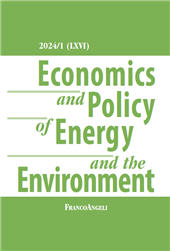Why the EU risks missing its 2050 carbon neutrality target by focusing only on new (electric) car sales
97-114 p.
In 2016, by signing and ratifying the Paris Agreement, the European Union committed to making the EU economy and society climate neutral by 2050. In 2016, partly because of this goal, the European Council endorsed an interim target of a 55% net domestic reduction in climate-changing gas emissions by 2030. The transport sector is among those called upon to make the greatest effort, both because of its percentage weight (25% of the EU's greenhouse gas emissions) and its progress to date (-10% from 1990 levels). Recent regulatory measures suggest that there is still much work to be accomplished to attain climate neutrality in the transportation sector.
The paper examines the impact of vehicle emission performance standards (443/2009/EC; 333/2014/EU; 2019/1242/EU; 2019/631/EU; 2023/851/EU) on the sup-ply and demand of cars in the EU automotive market and tests the consistency of the ongoing transformations with the Paris Agreement. Although changes in both production and purchase have been made in the direction desired (perhaps mandated) by policy makers, it appears that the scale of these is not meeting the required timeline. Much remains to be done to eliminate options, such as fuel decarbonization, which can effectively reduce the carbon footprint of the road fleet. [Publisher's Text].
-
Articles from the same issue (available individually)
-
Information
ISSN: 2280-7667
KEYWORDS
- EU-automotive market, sustainable mobility, road transport decarbonization, electro-mobility, EU-car CO2 regulation


